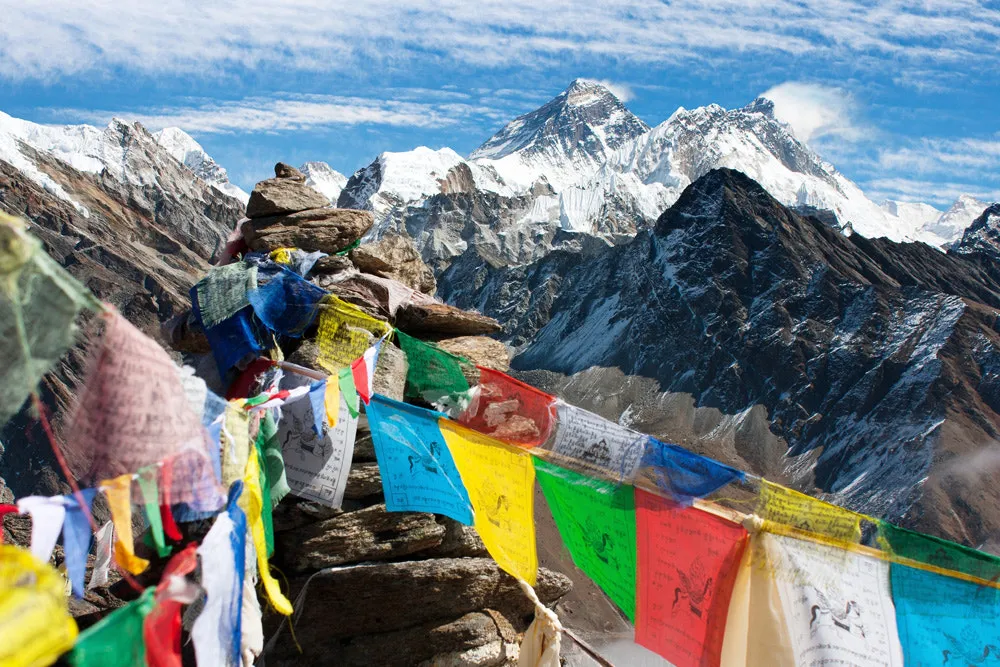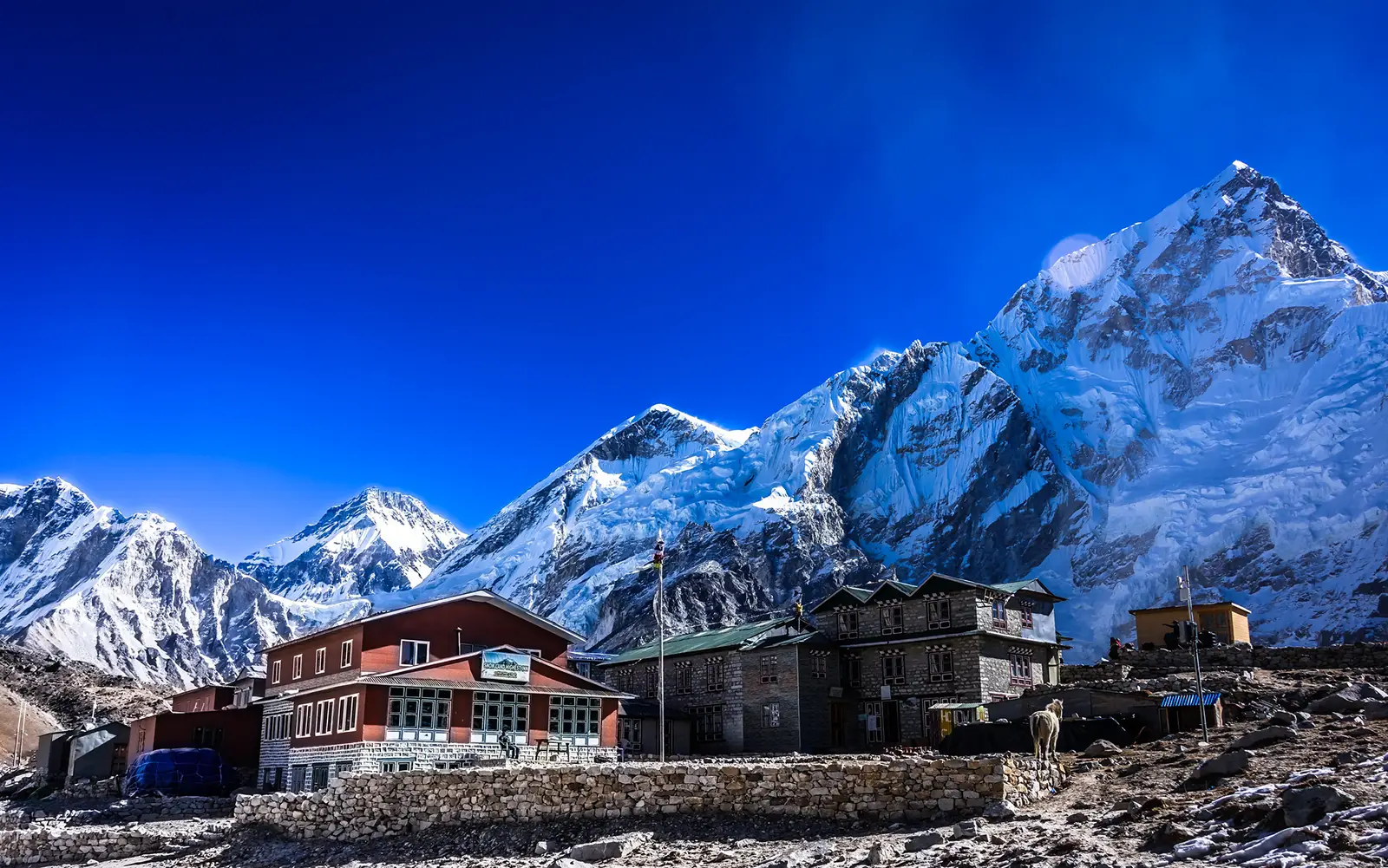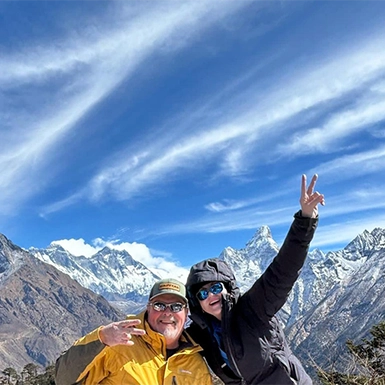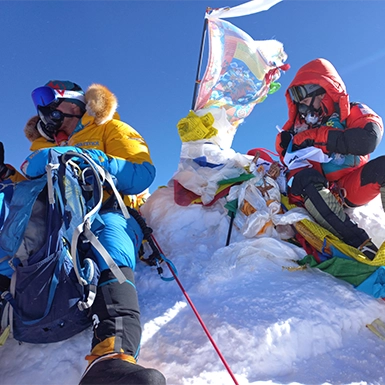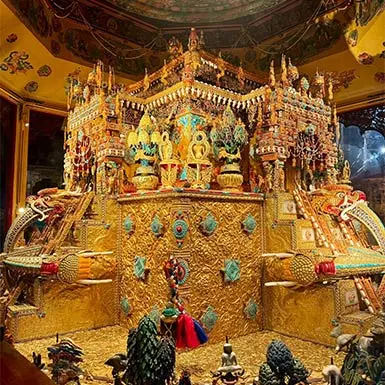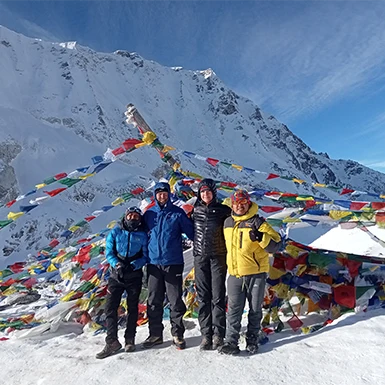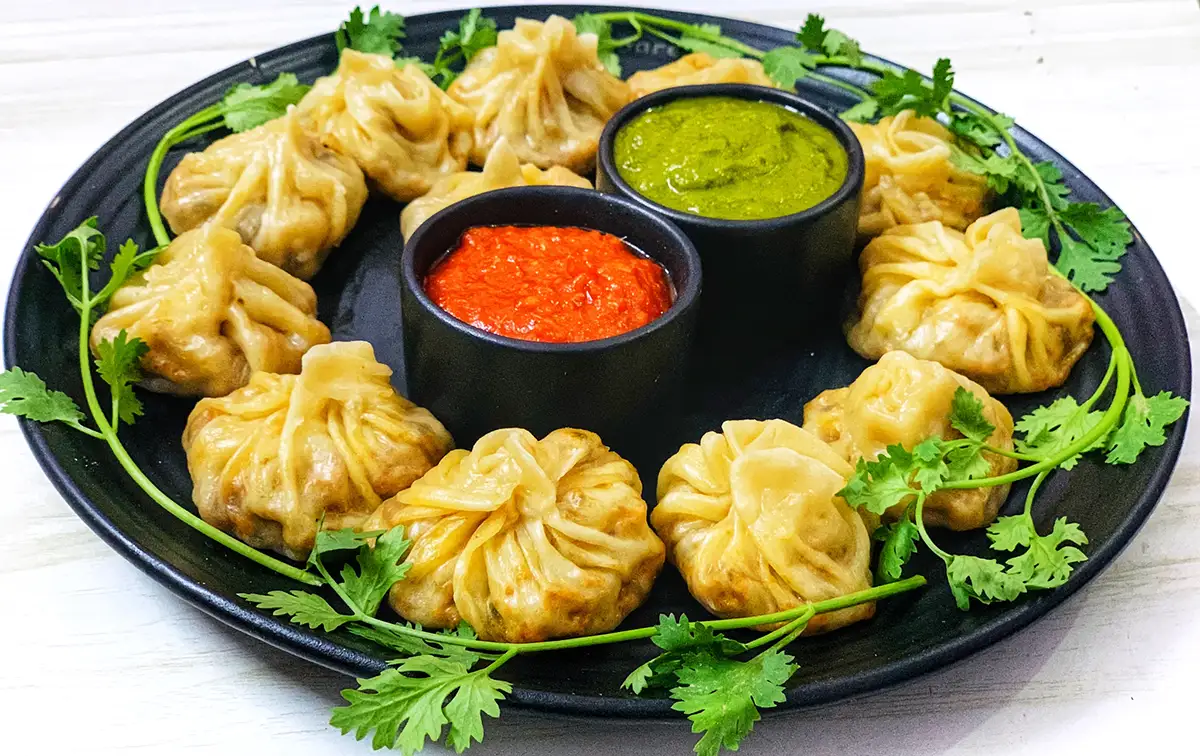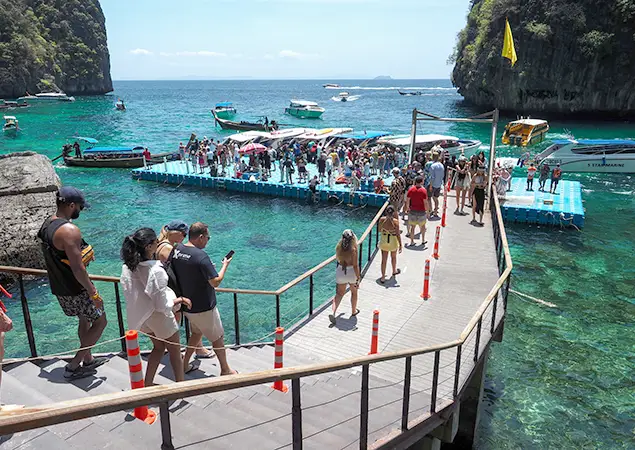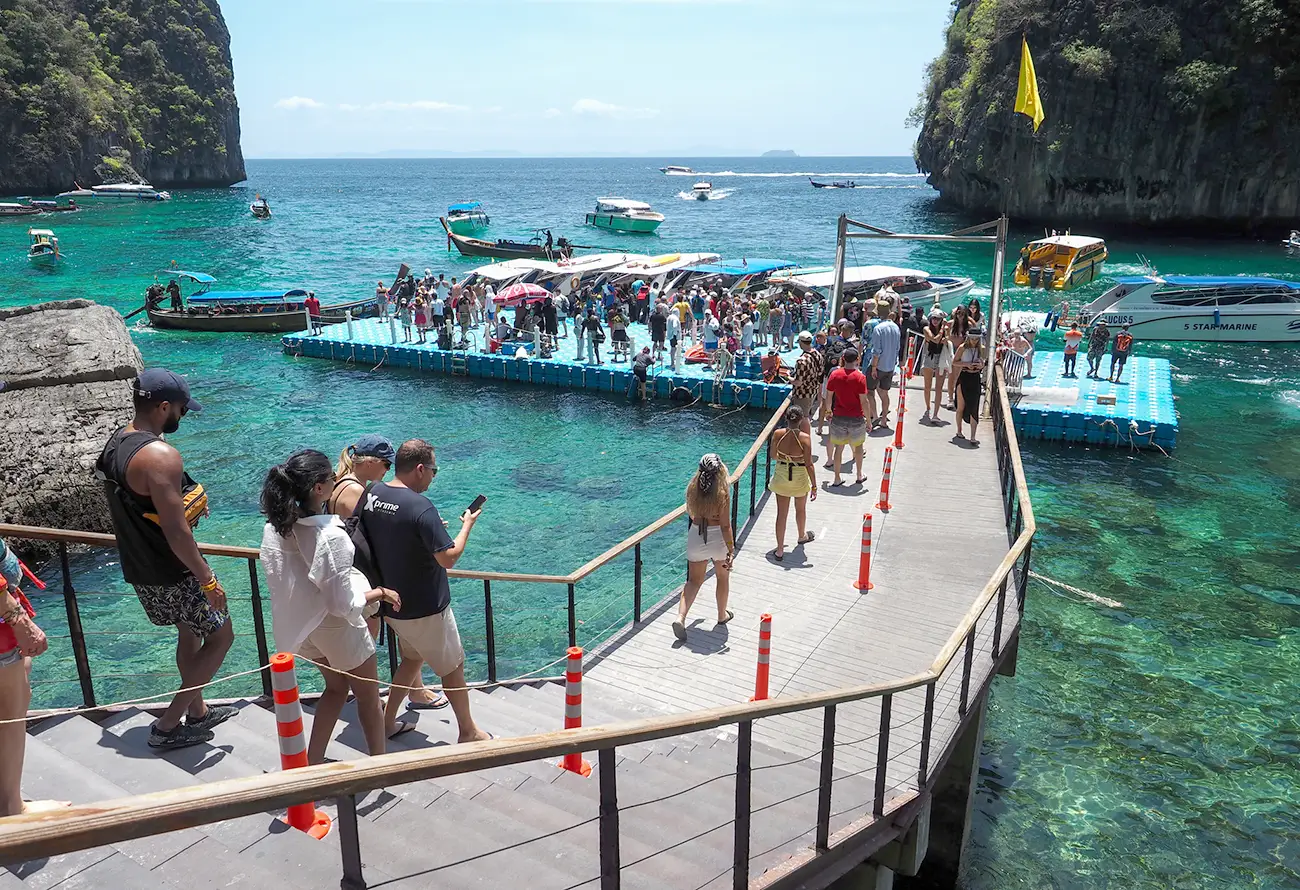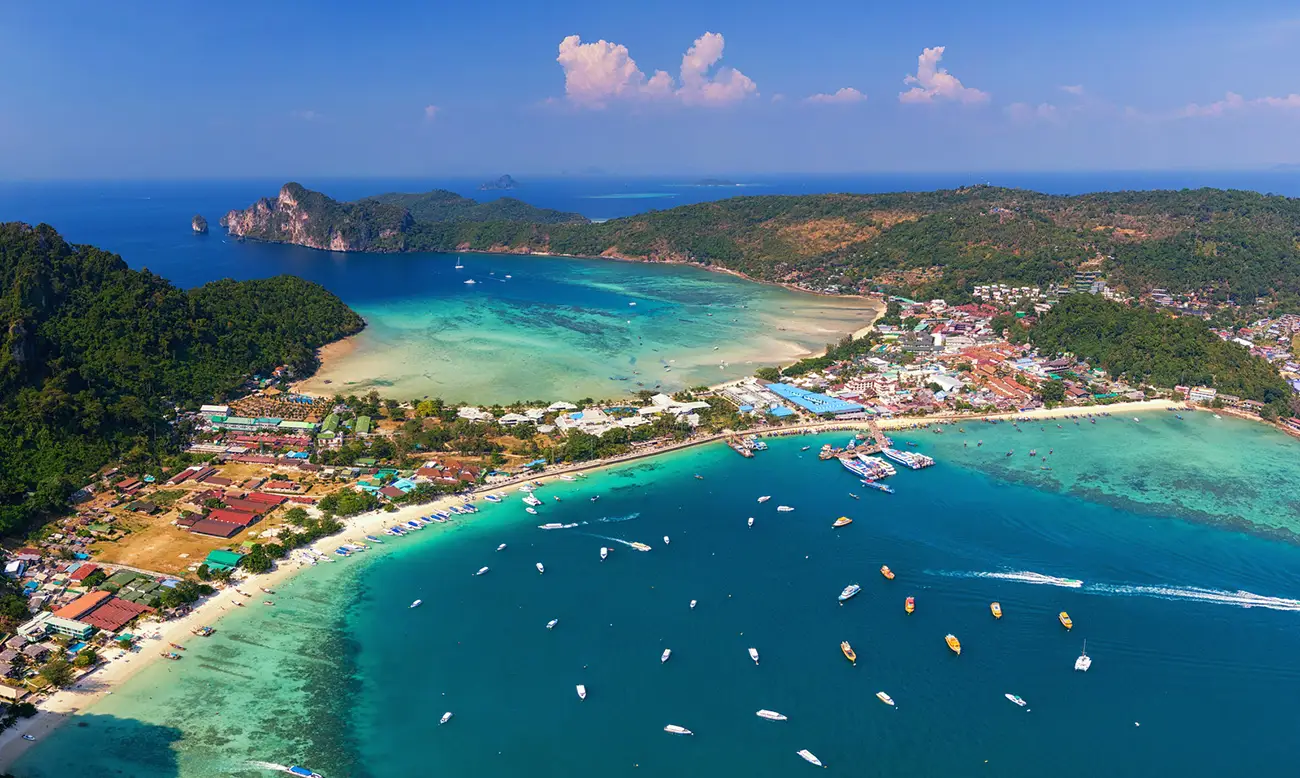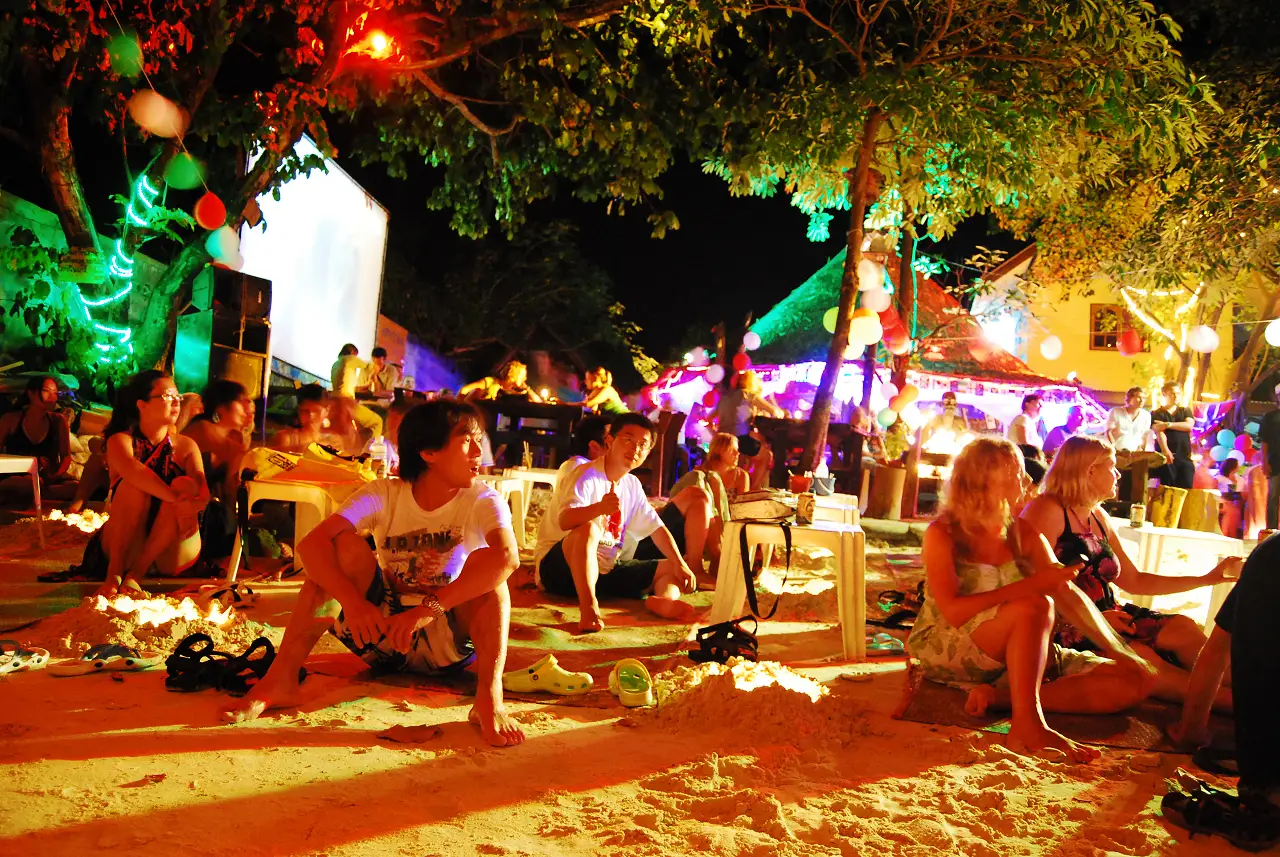6. Tips for Booking a Helicopter Return
The majestic Everest Base Camp (EBC) trek offers an unforgettable experience, and incorporating a helicopter return adds a touch of luxury and saves valuable time. But before booking that scenic flight, some crucial steps ensure a smooth and safe adventure. Here are valuable tips for booking a helicopter return on your Everest Base Camp Trek with helicopter return cost within your budget.
Partnering with Reputable Companies:
Choosing a reputable trekking company like Peregrine Treks for Everest Base Camp Trek with helicopter return is important. Here’s what to look for:
- Experience: Choose trekking companies with a history of successful Everest Base Camp treks that include helicopter return options.
- Safety Focus: Ensure the company prioritizes safety by using well-maintained helicopters and experienced pilots.
- Transparency: Choose a company that provides clear and detailed information about the helicopter return service, including the type of helicopter used, safety procedures, and insurance coverage.
Booking for the Best Deals:
The best time to book your Everest Base Camp Trek with helicopter return depends on your priorities:
- Cost Savings: Consider shoulder seasons (February, June, or December) when helicopter return prices might be lower compared to peak trekking seasons (March-May and September-November). But at this time, you need to make a private trip because you may need a group to share.
- Availability: Peak seasons experience high demand. Booking well in advance secures your spot, especially if you prefer a private helicopter return.
Essential checks before booking:
Before finalizing your Everest Base Camp Trek with helicopter return booking, ensure you thoroughly check the following:
- Company Reviews: Read online reviews from past trekkers to gauge the company’s reputation and service quality.
- Safety Record: Inquire about the company’s safety record and helicopter maintenance procedures.
- Cost Inclusions and Exclusions: Clearly understand what’s included in the quoted price for the helicopter return. This might not cover airport taxes, fuel surcharges, or service fees.
By following these tips, you can confidently book an Everest Base Camp Trek with a helicopter return that aligns with your expectations.

7. What to Expect During the Helicopter Ride
The decision is made – you’re conquering Everest Base Camp with a thrilling helicopter return! This section delves into what to expect during this exciting add-on, ensuring you’re prepared for breathtaking aerial views and a smooth journey back to Lukla (or even Kathmandu).
A Scenic Helicopter Flight:
The helicopter ride back from Everest Base Camp is a remarkable experience in itself. Here’s a breakdown of what to anticipate:
- Flight Time: The helicopter flight typically takes between 30 to 45 minutes, whisking you back to Lukla in a fraction of the time it takes to trek down.
- Panoramic Vistas: Prepare to be awestruck! Soar above the Khumbu Valley, witnessing the majestic peaks of Everest, Lhotse, Nuptse, and countless other Himalayan giants from a unique bird’s-eye view. Capture stunning aerial photographs as you glide past glaciers, rivers, and Sherpa villages nestled amidst the mountains.
Safety First:
Safety is paramount during your helicopter return. Here’s what to expect:
- Pre-flight Briefing: The pilot will provide a pre-flight briefing outlining safety procedures, including seatbelt use and emergency protocols.
- Helicopter Capacity: Be aware that helicopter capacity can vary depending on the company and model used. You might share the flight with other trekkers, or you may have a private experience if you opted for that option.
- Landing Procedures: Landing at Lukla can be an exciting experience due to the high altitude and unique terrain. The pilot will ensure a smooth and safe landing.
Important Reminders:
Remember these key points for a seamless helicopter return:
- Luggage Restrictions: Helicopters have weight limitations. So, you are allowed to carry up to 15 kg of your luggage.
- Weather Conditions: Remember, helicopter flights depend on the weather. Be prepared for possible delays if strong winds or low visibility ground the choppers.
By understanding the flight duration, scenic highlights, and safety measures, you can approach your Everest Base Camp Trek with a helicopter and return with confidence and excitement. The next section offers a summary of the Everest Base Camp Trek with Helicopter Return Cost.
Conclusion
This comprehensive guide explored the captivating world of Everest Base Camp (EBC) treks, with a particular focus on the Everest Base Camp Trek with helicopter return cost. We delved into the traditional trek experience, outlining the cost range (typically $2600 to USD 3000) in the sharing option and USD 4500 to USD 4800 for the private helicopter cost (up to 5 people) with trekking cost of USD 1800 – 2000 per person—the unique challenges and rewards of this once-in-a-lifetime journey.
Craving a time-efficient and luxurious way to experience Everest? The Everest Base Camp Trek with helicopter return swoops in as a tempting alternative. We explored the average cost range for the helicopter return ($1200 to USD 1500 on top of the traditional trek cost), along with factors influencing the final price, such as seasonality, group size, and booking strategy.
We then compared the pros and cons of a helicopter return versus trekking back down to Lukla. While the helicopter offers undeniable convenience and breathtaking aerial views, the traditional trek allows for a deeper immersion into the Khumbu Valley’s landscapes and culture.
Finally, we provided valuable tips for booking a safe and reliable helicopter return, including choosing reputable companies like Peregrine Treks, considering the best time to book, and understanding what’s included in the cost. We also offered insights into what to expect during the thrilling helicopter ride itself, from the flight duration and breathtaking panoramas to safety measures and luggage restrictions.
Final Thoughts for Aspiring Everest Base Camp Trekkers:
The decision between a traditional trek back and a helicopter return ultimately depends on your individual preferences and budget. Here are some parting words to guide you:
- Prioritize Fitness and Time: If you’re physically fit and have ample time, the traditional trek offers an unparalleled experience for a lower cost.
- Luxury and Time Savings: If you’re pressed for time or desire a more luxurious experience, the helicopter return allows you to maximize your time in Nepal while still conquering Everest Base Camp.
No matter your Choice, the majestic Everest Base Camp awaits! This guide has equipped you with the knowledge to make an informed decision and plan your dream Everest Base Camp Trek, whether you choose the traditional trek or the exhilarating helicopter return.




